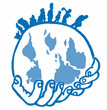With the first-ever malaria vaccines rolling out across Africa and a next-generation tuberculosis (TB) vaccine in testing, scientific advances are driving an unparalleled expansion of vaccine development. But vaccines in development don’t become immunizations that protect our health without concerted efforts by global initiatives like Gavi, the vaccine alliance, that help bring these life-saving products to the world’s poorest countries.
Next month, Gavi will kick-off a campaign to raise several billion dollars to deliver on its new strategy. The stakes are high: falling short of its target could delay delivery of vaccines to those most in need.
But amidst a rapidly changing global landscape, Gavi’s leadership and board must look inwards and seize the opportunity to reform by adjusting its operational model, addressing how it delivers vaccines in humanitarian and conflict settings, sustaining the impact of its investments, and aligning with other global health initiatives to respond to country priorities.
By Gavi’s own count, it has helped immunize more than a billion children since its launch in 2000. But underlying this remarkable impact is a stark reality: millions of women and children continue to miss out on vaccines. Perhaps most staggering is the fact that close to 15 million children around the world still do not receive basic childhood vaccines, leaving the poorest and most vulnerable susceptible to preventable diseases.
Significant gaps in accessing newer vaccines also exist. Only 20% of girls worldwide have received the human papillomavirus (HPV) vaccine, which protects against the leading cause of cervical cancer.
As Gavi’s leadership and board finalize a new strategy that will cement its priorities over the next five years, we urge attention to three areas to ensure that every child, everywhere, has access to vaccines.
Rethink criteria for selecting countries
First, Gavi should update how it deems which countries receive support. Since its early days, Gavi has channeled financial support for immunization, based on national income per capita, to the poorest countries that also showed the biggest gaps in immunization access. The model is simple: if national income per capita is below the eligibility line, a country can receive full Gavi support; if it is above the line, then no support is given. But almost 25 years later, it’s time to refine how this works.
As a growing number of countries face economic headwinds and stagnating vaccination rates in the post-COVID era, Gavi needs to better match support with a country’s ability to pay for vaccines. And as new vaccines – including for TB – become available, Gavi’s model needs to align with the burden of leading infectious killers.
As one case in point: four of the highest TB burden countries – India, Indonesia, China, and the Philippines – are no longer or were never eligible for Gavi support. But ironically, they are eligible for financial support for TB diagnosis and treatment from Gavi’s sister organization, The Global Fund for AIDS, TB, and Malaria. This policy mismatch could limit the impact of a new vaccine against a major infectious killer.
Invest more in vaccine delivery innovation
Second, Gavi should play a bigger role in scaling innovations to address the barriers that deter vaccine delivery. COVID-19 laid bare just how critical health systems infrastructure is to stopping disease outbreaks in their tracks. It also proved how useful innovations like digital immunization records can be in boosting vaccine uptake.
With dedicated resources, Gavi can support partner countries to scale proven innovations for immunization systems they want and need. This could include solar panels for electrification of health clinics, unmanned drones for vaccine delivery, and digital immunization records.
While each of these innovations has been proven to work, Gavi’s investments would fill a critical gap in providing financing to scale, thereby leveraging at-risk early funding by other partners. Gavi’s track record in innovation, including financing mechanisms to scale new vaccine introductions, makes it well placed to do so.
Pilot new financing to ensure country control
Lastly, Gavi should pilot new ways to channel financing to partner countries that puts them in the driver’s seat and respond to national priorities. This is especially timely amidst growing calls to shift the center of gravity for decision-making to countries.
How can this be achieved? One idea is for Gavi to test a new approach that provides a consolidated envelope of resources to each country, scaled to specific criteria including population size.
One portion could be dedicated to vaccine purchasing, enabling countries to base decisions on their own priorities. The second portion could be carved out for technical support and grants for health systems strengthening. With the 2030 deadline of the Sustainable Development Goals in sight, now is the time to experiment.
Our collective ability to end the scourge of vaccine-preventable diseases is within reach. And Gavi – provided it is able to reform – remains one of our best bets to get there. At this crucial juncture, its leadership, board, and donors must ensure that Gavi has a fit-for-purpose model with adequate resources to deliver on the unfinished immunization agenda in a shifting global landscape.
